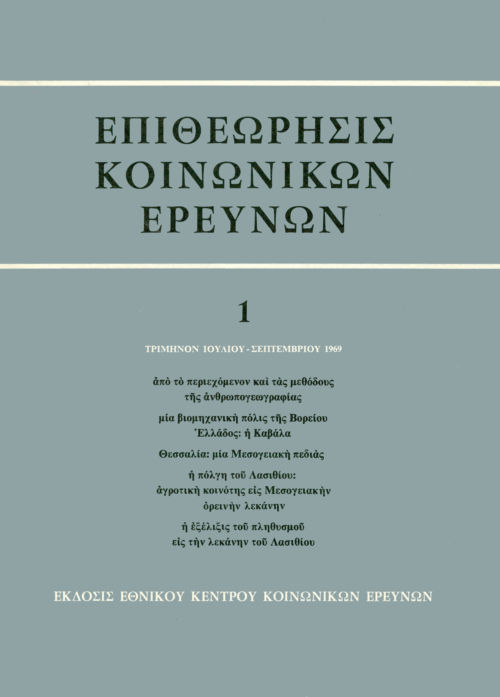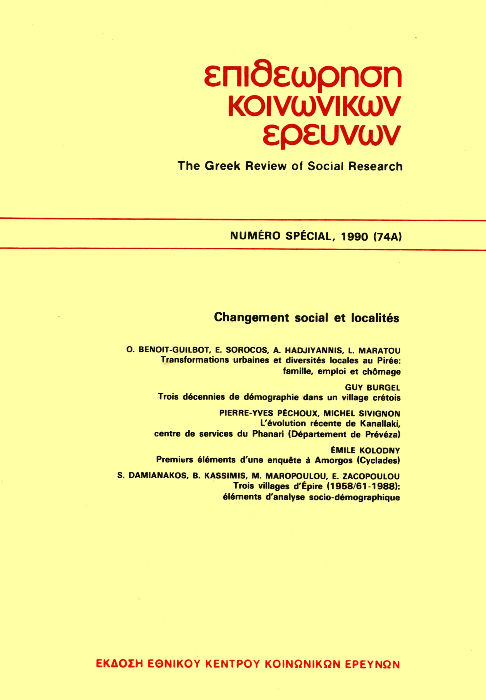Kavala:Une ville industrielle de Grèce du Nord
Abstract
Les activités industrielles de Kavala sont depuis longtemps
dominées par la préparation du tabac. Mais deux facteurs
ont joué récemment au détriment de la ville: la mécanisation
des fabrications crée un chômage technologique là où il
n’était que saisonnier; le transfert de plusieurs entreprises
à Salonique diminue le volume d’emplois offerts. Les autres
activités de la ville sont caractérisées aussi par le sous emploi.
A cette situation la population active répondait au moment
de l’enquête (1965-66) par l’émigration, notamment
vers l’Allemagne. L’installation à Nea Karvali d’une usine
d’engrais chimiques ne paraissait pas susceptible de renverser
rapidement une tendance qui semble exclure la possibilité
d’une croissance démographique et économique de Kavala
dans les années à venir.
Article Details
- How to Cite
-
Pechoux, P.-Y. (1969). Kavala:Une ville industrielle de Grèce du Nord. The Greek Review of Social Research, 1, 8–21. https://doi.org/10.12681/grsr.520
- Issue
- 1969: 1
- Section
- Articles

This work is licensed under a Creative Commons Attribution-NonCommercial 4.0 International License.
Authors who publish with this journal agree to the following terms:
- Authors retain copyright and grant the journal right of first publication with the work simultaneously licensed under a Creative Commons Attribution Non-Commercial License that allows others to share the work with an acknowledgement of the work's authorship and initial publication in this journal.
- Authors are able to enter into separate, additional contractual arrangements for the non-exclusive distribution of the journal's published version of the work (e.g. post it to an institutional repository or publish it in a book), with an acknowledgement of its initial publication in this journal.
- Authors are permitted and encouraged to post their work online (preferably in institutional repositories or on their website) prior to and during the submission process, as it can lead to productive exchanges, as well as earlier and greater citation of published work (See The Effect of Open Access).




